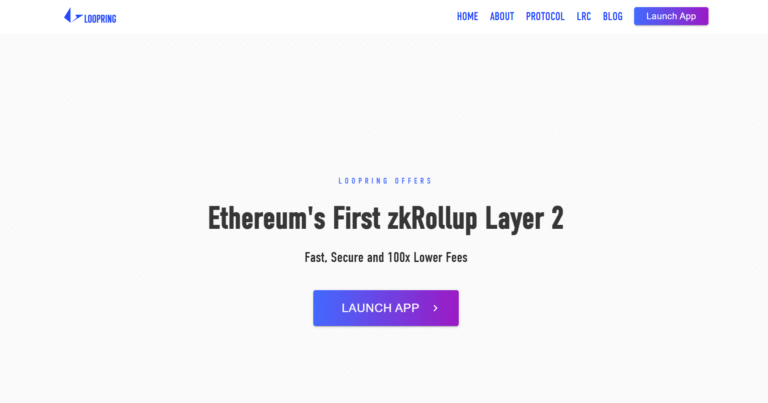Table of Contents
Introduction to Loopring
This is a thorough Loopring review that addresses concerns around the Loopring scam narrative circulating among investors. Loopring (LRC) is a Layer-2 Ethereum protocol offering zk-Rollup technology for faster, low-cost trading, swapping, payments, and DeFi tools. It is developed by Loopring Technology Ltd., registered in the British Virgin Islands with notable links to Shanghai-based protocols. Yet, many are asking: is Loopring a scam or a credible blockchain solution? This Loopring review unpacks essential insights and red flags you need to consider.
Whether you believe you may have lost funds due to Loopring or are evaluating its legitimacy before investing, this article speaks to your uncertainty and frustration while delivering the objective clarity you deserve. It’s vital to examine whether Loopring is a fraud before risking your tokens.
Loopring: Regulation & Legal Status
As a decentralized protocol, Loopring is not regulated by financial bodies like the FCA, ASIC, or CySEC. Its structural setup—registered in an offshore jurisdiction—means there is no direct oversight, consumer protection, or formal dispute resolution available for users.
Some platforms leverage false claims of high-profile endorsements to appear legitimate. Loopring avoids this but still requires caution, as lacking formal regulation may leave users exposed. To stay informed, learn how to spot a scam broker before it’s too late. The absence of oversight raises serious questions about whether Loopring is a scam.
Trading Conditions & Platform Analysis of Loopring
Loopring operates through non-custodial, open-source zk-Rollup technology built for Ethereum. It supports AMM and orderbook DEXes, plus payments and NFTs, all with high throughput and low transaction costs—some estimates note trade settlement fees as low as $0.00015 :contentReference[oaicite:0]{index=0}.
Despite that, users have reported unexpectedly high gas fees when crossing between Layer-1 and Layer-2, making small trades costly :contentReference[oaicite:1]{index=1}. Also, some staking or reward mechanics (like the “Loopring points”) have been criticized as misleading or unfair :contentReference[oaicite:2]{index=2}.
Having advanced technology doesn’t automatically guarantee trust. To understand what reliable infrastructure should include, review what to check before signing up with a trading platform. These issues make it harder to dismiss concerns that Loopring might be a fraud.
Reputation & User Reviews About Loopring
Loopring generally receives praise for its vision, including its partnership with GameStop for an NFT marketplace :contentReference[oaicite:3]{index=3}. However, community feedback includes strong criticisms around wallet hacks and poor communication following incidents :contentReference[oaicite:4]{index=4}.
Multiple users reported phishing attempts or losses after connecting to fake Loopring domains (e.g. “.io” vs “.org”) :contentReference[oaicite:5]{index=5}. Others lament the platform’s lack of responsiveness or abandonment following issues, describing “dead tokens” or unmet expectations :contentReference[oaicite:6]{index=6}.
These patterns underscore the importance of distinguishing genuine user concerns from hype—and urging caution, particularly when reading review platforms like Trustpilot, which may contain inflated or skewed narratives :contentReference[oaicite:7]{index=7}.
How to Test Whether Loopring Is a Scam
To gauge Loopring’s legitimacy, consider these steps:
- Assess security: Confirm protocol audits and open-source status, as these boost transparency.
- Monitor community feedback: Examine discussions on Reddit, crypto forums, and GitHub for consistent reports of issues like hacks or silent protocol changes.
- Beware of phishing: Only use official domains and double-check URLs before connecting wallets, as impersonators are common :contentReference[oaicite:8]{index=8}.
- Evaluate fees: Small transactions on L2 may still cost heavily when accounting for L1 activity—calculate before transferring.
- Test gradually: Use minimal funds when interacting with Loopring’s ecosystem to surface unexpected behavior.
- Avoid too-good-to-be-true offers: Any promises of unrealistic yields or “rewards” should raise immediate suspicion.
If you’re concerned, you can also report or verify suspicious behavior via the FTC’s fraud reporting portal.
Final Verdict & Alternatives
Loopring is a legitimate, innovative Ethereum Layer-2 protocol with substantial backing and a functioning ecosystem. That said, users should be cautious due to past communication lapses, hacking incidents, and complexity around gas or staking mechanics.
If you’re seeking structured alternatives with strong protections, consider platforms like Arbitrum, Optimism, or more established DeFi ecosystems integrated with reputable CEXs. Always use well-reviewed, transparent platforms with clear governance and user protection.
The question—is Loopring a fraud?—doesn’t hold conclusively negative weight. But whether it’s right for you depends heavily on your risk tolerance, attention to detail, and readiness to navigate crypto’s nuances.



